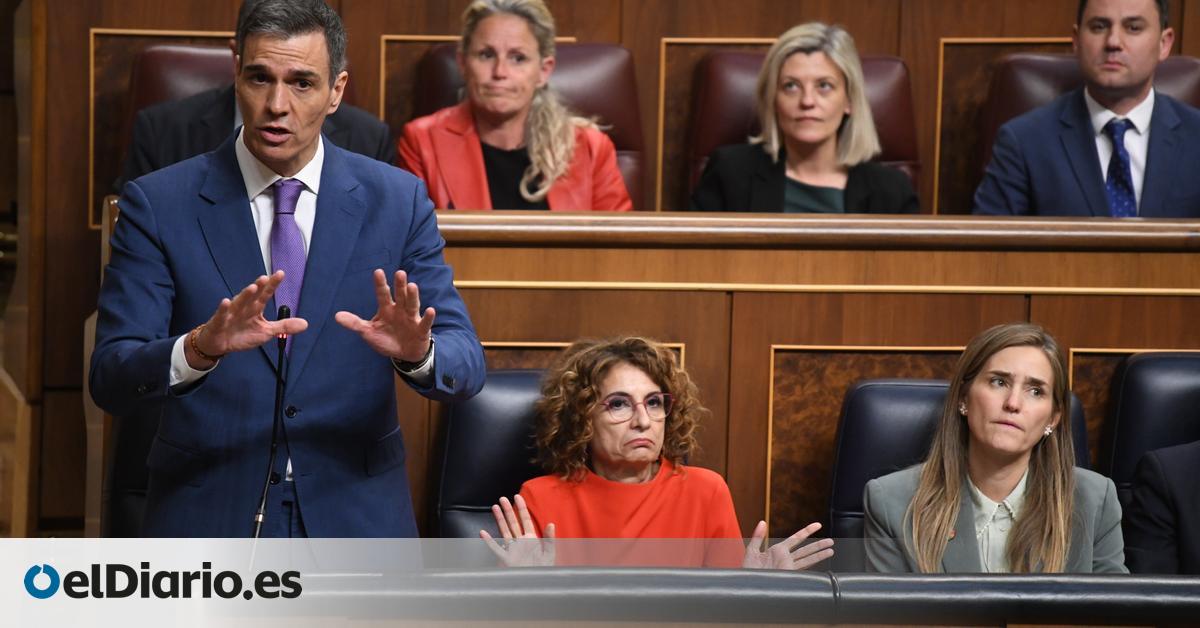
As soon as the electricity supply had been restored when last week the public debate had already been promoted by those who saw in the great blackout of April 28 a land paid to point to renewable energies and claim nuclear. In that context, the president of the Government did not even wait on Wednesday even in his replica shift to confront with the right bench during his appearance in Congress. Pedro Sánchez came to call “amateur lobists” of large energy companies to the deputies of PP and Vox. And he launched an explicit message to those companies, which he requested a formal proposal on the future of nuclear power plants as long as they assume three previous requirements.
“If companies agree between them another calendar that extends the centrals, we will listen to them as we hear all sectors. But we will do it as long as three requirements of absolute common sense are met. The first, that this extension guarantees the safety of citizens. Second, that is economically viable and is not at the expense of the taxpayer’s pocket, but of the ultra -ups that preside over those large energy that are owned by those main energy. Third, that the measure is convenient to guarantee the safety of the electrical system, ”he said.
The Government explains that, with his words, the president wanted to remember that it is always the companies that took the initiative in their day to specify the closing calendar. And that until now none of them has moved a finger to prolong the activity of the plants scheduled for closing because, they ensure executive sources, not even those companies are clear if it is profitable. And hence Sánchez underlines that in no case goes through the plans of his government to assume the cost of the necessary investments or that these costs have an impact on the electricity bill.
Before, the executive leader made a defense on the renewable energies, which he kept out of the crisis last week. “On April 28, our system operated with renewable levels lower than those of other previous days. The issue is a bit more complex, not to say much more complex. Linking the nuclear debate is irresponsible and a gigantic manipulation,” he said.
In that line, Sánchez recommended that citizens “distrust those who tell them that this goes or renewable or nuclear, because it is not so.” And he stressed that, according to the data collected, “there is no empirical evidence that says that the incident occurred by excess renewables or lack of nuclear.” That is why he directly accused Feijóo of not acting as a political leader but as a representative of the big companies.
“He is in his right to become a spokesman for the interests of these companies, but I propose that he does it from the press room of his venues and not from this tribune,” he said, after shaving him to enter nuclear demands in the negotiation of the package of economic measures to protect the Spanish commercial war industry with the United States. “But what does the speed with the bacon, Mr. Feijóo?
In their public statements, both Feijóo and other regional leaders, from Isabel Díaz Ayuso to María Guardiola, have repeatedly indicated as guilty of the blackout of April 28 to the renewables, while they have placed the nuclear as a solution to future similar problems. Genoa’s thesis is that the blackout was due to an error in the energy mix, to the lack of “backup technologies” or an abuse of “unstable sources.” With the first, the PP refers to hydraulics, gas or nuclear. With the second, to the photovoltaic or wind. “They appear to be the greatest in the world and took Spain to Black,” Feijóo snapped to the president of the Government during the appearance of Pedro Sánchez in Congress. “He had to beg in nuclear energy to France,” he said.
In his speech, the PP leader expressly defended nuclear energy as an inseparable companion of a mix dominated by solar or wind. “It does not go renewable or nuclear. It is renewable and nuclear,” he said. In fact, Feijóo recovered a document of April 2022 in which he proposed to the Government an energy pact in which he bet on “maintaining the nuclear.”
From the direction of the PP it is argued that energy companies want to prolong the life of nuclear, although they have not yet formally requested it for “complications set by the government that are not given in other countries”. Sources consulted by Eldiario.es see a “good news” that Sánchez can open the door to reconsider the closing calendar of uranium -based plants.
Of course, the decision to maintain or not the centrals open, they say in the PP, is of the companies. “If companies want to close, we think it’s good,” they defend in the direction of the main opposition party. And the same sources grant that “the mix can survive with backup energy that is not nuclear.”
The Government awaits companies
Meanwhile, the Ministry for Ecological Transition has been inviting electricity for months to raise a formal proposal if they want the closing calendar that they agreed in 2019, before the war in Ukraine and the largest energy crisis in decades. The most immediate is the future of the Almaraz Central (Cáceres), whose first group is planned to close in November 2027, while unit 2 would close in October 2028. Its future depends in the first place that its owners, Iberdrola, Endesa and Naturgy (whose nuclear business is residual) depends. Before the blackout, companies had a meeting for May 20 to address this issue that has been postponed to June, without a planned date.
From the outset, and given the low prices of the wholesale electricity market that have brought with them the renewables that make the reactors operate in the market, the electric ones require something that the Government rejects, because it understands that it would be a socialization of the problem: that taxes are reduced to the reactors. Both state rates, and autonomous, which are about 18 euros per megavatio hour (MWh) produced, as the so -called Enresa rate, which nourishes the fund for the financing of the activities of the General Plan of Radioactive Waste.
With that rate with which this public company raised 600 million last year, the reactors finance (while operating) the fund that must cover the cost of dismantling and the management of nuclear waste, estimated at 26,000 million. The fund, which the electric feed since 2005 (until then the consumers are paid in their rate) accumulated at the end of 2023 (last data available) 8,000 million.
The companies have resorted to the increase of 30% of that rate that the Government approved last year to cover a new radioactive waste plan that was expired since 2010 and that adapted to the new reality: in the absence of consensus to build the centralized temporal warehouse (ATC) in any autonomous community, nuclear waste will be dispersed in seven individual warehouses (ATIS) (of about 2,000 million). All this, waiting for a deep geological warehouse (AGP) for the last third of this century where that radioactive garbage that maintains its danger for tens of thousands of years will be buried.
What would happen if that rate was reduced? The previous president of Enresa, José Luis Navarro, warned a couple of days ago that the time will come when there will be a “fund insufficiency” and “responsible for having generated those waste will no longer have any responsibility.” And there will only be two alternatives: taxes or the electric rate, as before.
The most immediate and hot is Almaraz. The protocol signed in 2019 by the owners of the centrals and Enresa establishes that the next closure would already arrive in October 2030, with Ascó I (from Endesa), which is located in Catalonia, territory that goes far behind the rest in implementation of renewables. A month later, Cofrentes (from Iberdrola) would be closed, already by September 2032, it would be Ascó II’s turn and in 2035 the closure of Vandellós II (February) and Trillo (May) would arrive.
Source: www.eldiario.es

